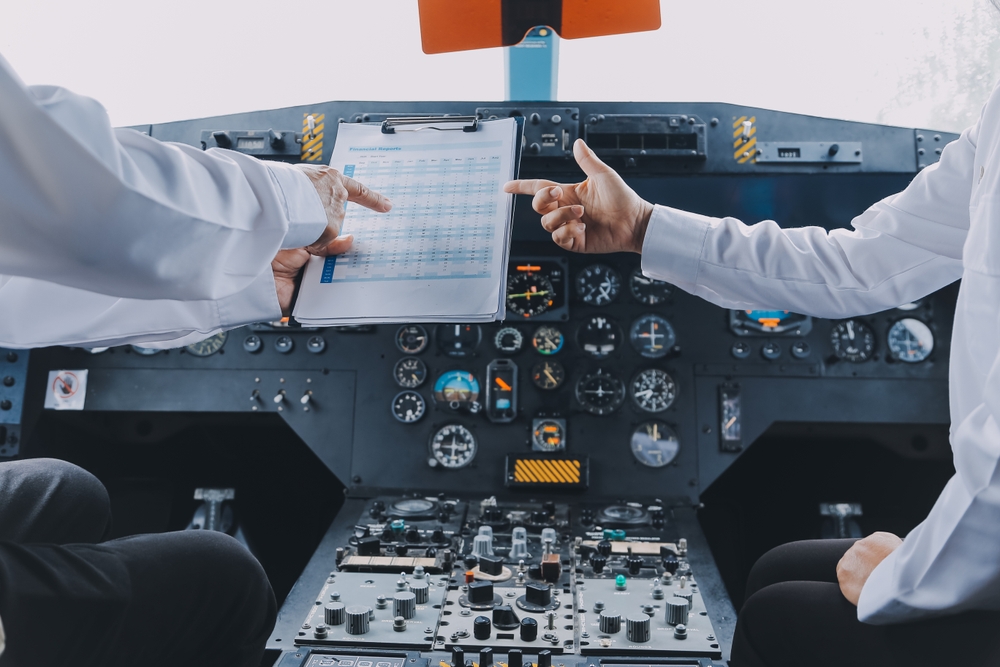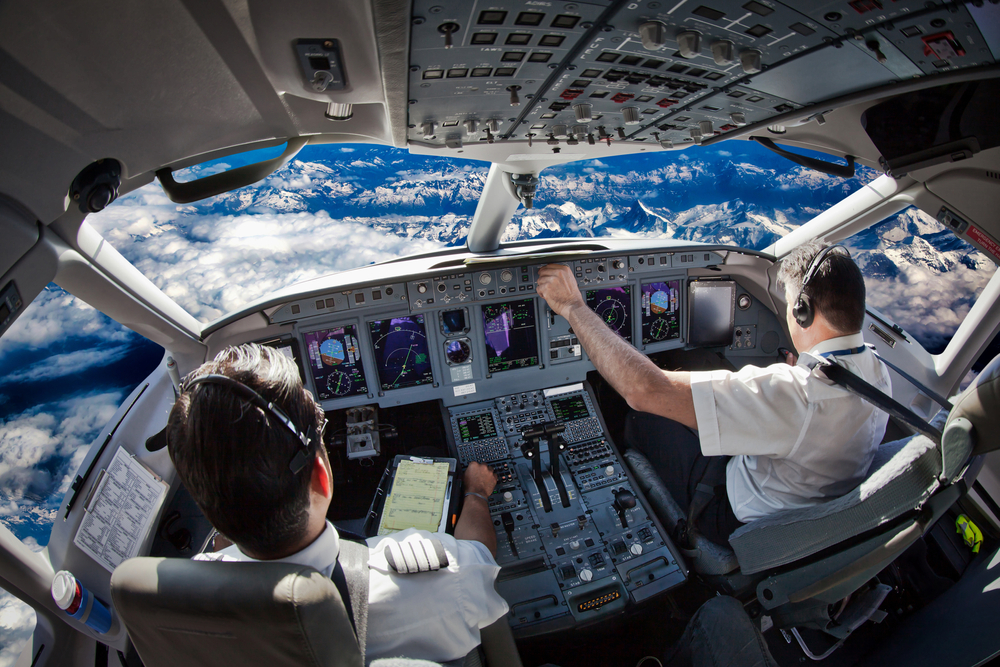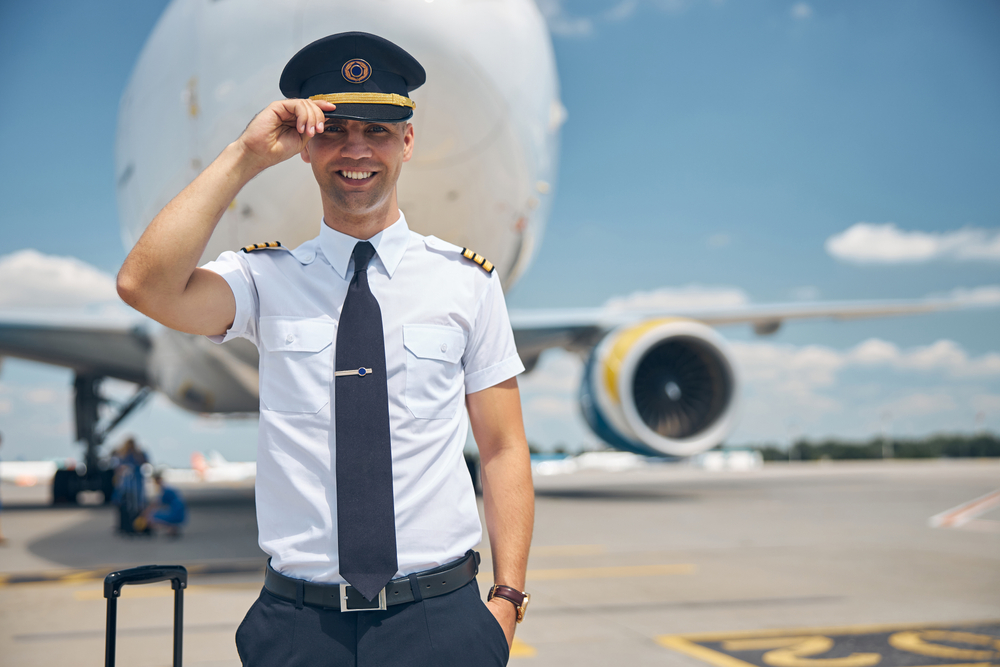As a pilot or someone training to become one, you have probably wondered not just how much pilots make each year but what a pilot’s daily routine looks like. What does a pilot’s routine involve? And what exactly do we do to earn those sky-high salaries?
Understanding your daily routine as a pilot gives real insight into what it takes to succeed in this challenging yet incredibly rewarding career. From preflight preparation in the early hours to the responsibilities that come after landing, every part of your day is carefully structured to keep operations smooth and safe.
In this article, you will get a closer look at:
• How many flight hours you need to reach your dream role
• What a typical day in a pilot’s life actually looks like
• And yes, how much you can expect to earn
Ready to explore the real day-to-day life in the cockpit? Let’s get started!
Table of Contents
How many flight hours do you need to become a commercial airline pilot?
Becoming a commercial pilot is more than just a dream. It is a serious commitment that demands dedication and hard work. You probably already know that the number of flight hours required can vary depending on the region, but in most cases, you will need at least 1,500 hours to earn your Airline Transport Pilot certificate. This certificate is your entry point to flying for commercial airlines and proves that you have built the experience and skills aviation requires.
The path to gaining those hours includes several important stages, such as private pilot training, earning your instrument rating, completing commercial pilot training, and becoming proficient with multi engine aircraft. If you have not yet reached the 1,500-hour mark, do not worry. There are many ways to build your time and get the experience needed to launch your career in commercial aviation.
Daily routine of a pilot: morning preparations
Your daily routine as a pilot usually begins long before you and your flight crew arrive at the airport. The morning routine is crucial for setting the tone for your entire day. Here’s what it typically involves:
Wake-up call
You will often wake up many hours before your flight to ensure you have enough time to prepare for takeoff. The exact time can vary based on the scheduled flight and your personal preferences, but early mornings are common in your daily routine.
Physical fitness
Many pilots start their day with exercise to stay fit and alert. A healthy body contributes to better concentration and decision-making skills. Whether it is a morning run, yoga, or a quick workout at the hotel or home gym, staying physically fit is key to handling the physical and mental demands of flight.
Checking flight schedules
Checking your flight schedule is an essential part of your morning routine. You need to confirm departure times, flight durations, and any last-minute changes. This typically involves checking the airline’s system for updates. Staying on top of the schedule is important to plan your day effectively.
Weather conditions
Understanding the weather is vital for you and your crew. Before you head to the airport, check weather forecasts and reports for your departure location, en-route waypoints, and destination. You will be looking out for turbulence, storms, or any other conditions that could affect the flight. Advanced weather briefing systems help you anticipate challenges and plan accordingly.
Personal preparations
Personal preparations are also a crucial part of your routine. Like the cabin crew, you will need to make sure your uniform is neat, pack your travel essentials, and ensure you have all the necessary documentation. This includes your licenses, medical certificates, and passport. A healthy breakfast is a must, too! You need to make sure you’re energized for the tasks ahead. Proper nutrition helps you stay focused and maintain your energy levels throughout the day.
Pre-flight duties: pilot’s daily routine at the airport
Once you are at the airport, you will engage in several pre-flight preparations to ensure the aircraft is ready for a safe journey. Your pre-flight duties include a few key steps. First, you will have a pre-flight briefing with your team. Next, you will carefully review the pre-flight checklist. And, of course, you will need to inspect the aircraft before departure.
Coordination with the crew
You will always meet with your co-pilot and the cabin crew in a designated airport area. This is where you will discuss the flight plan, passenger load, and any special instructions or procedures. This meeting is essential to ensure everyone is on the same page and fully aware of their responsibilities.
Pre-flight briefing
As the pilot-in-command, you will hold a comprehensive briefing session before the first leg of each flight. During the briefing, you will review the flight plans, weather updates, alternative routes, and emergency procedures. You will also cover any air traffic control (ATC) instructions and specific considerations for the flight. It is crucial that each crew member is prepared and well-informed about the flight details.
Aircraft inspection
You will always perform a walk-around inspection to check for any visible discrepancies. This typically includes examining the aircraft’s exterior, checking the fuel levels, and ensuring all systems are operational. This step is vital for making sure the aircraft is airworthy and ready for the flight.
Documentation review
Before each flight, you will review all the necessary documents, including flight logs, passenger manifests, and maintenance logs. This ensures that everything is in order and that the flight meets regulatory requirements. Proper documentation is essential for both legal and operational reasons.
In-flight duties: pilot’s daily routine during flight
A pilot’s in-flight responsibilities are essential for ensuring a safe and smooth aircraft operation. But do you know what the most important duties are during the flight?
Takeoff procedure
One of your key in-flight responsibilities is managing the takeoff procedure. You need to ensure that all systems are functioning correctly and that the aircraft reaches the appropriate altitude and speed. This phase requires precise coordination and communication with your co-pilot and air traffic control (ATC). You must stay vigilant and be prepared to handle any issues that might arise during takeoff.
Cruising phase
During the cruising phase, it is your responsibility to monitor the aircraft’s systems. You will also manage fuel consumption and ensure the flight path is maintained. As the flight progresses, you may need to make adjustments to navigate around weather systems or air traffic.
Communication
Ongoing communication with ATC is essential throughout the flight. You will receive updates on weather conditions, flight paths, and any potential hazards. You will also stay in touch with the cabin crew to ensure passengers are informed and comfortable. Effective communication is key to preventing misunderstandings and ensuring smooth flight operations.
Monitoring aircraft systems
Another important responsibility you have is conducting regular checks of the aircraft’s systems. You will have to continuously monitor the aircraft systems and instruments to detect any issues early on. You will also have to pay close attention to engine performance, fuel levels, and navigation systems. Modern aircraft come equipped with advanced electronics and monitoring systems that provide real-time data, helping you respond quickly to any abnormal situations on board.

Post-flight duties: what do pilots do after landing?
After landing, pilots have several tasks to complete before concluding their day. Post-flight duties are as important as any other part of a pilot’s daily routine. After landing, the pilot’s daily routine involves carefully recording flight details, thoroughly checking the aircraft, and discussing the flight in a debriefing session.
Flight logs
After your flight, you will have to fill out detailed flight logs, documenting the duration, distance, fuel consumption, and any issues you encountered during the flight. This information is crucial for tracking the aircraft’s performance and identifying any maintenance needs.
Pilot debriefing
You and your co-pilot will hold a debriefing session to review the flight and discuss any irregularities or areas for improvement. This collaborative review helps improve future operations and address any concerns. Debriefing is a regular part of your duties after each flight, giving both of you valuable feedback to enhance your performance.
Post-flight inspections
After the flight, another round of inspections ensures the aircraft is in good condition and ready for the next flight. You’ll check for any signs of wear and tear or technical issues and report them to line maintenance personnel.
Pilot schedule and rest balance
There is a common misconception about the pilots’ schedule, assuming their extensive travel prevents them from achieving a balanced work-life dynamic. However, rest is a crucial aspect of every pilot’s daily routine, governed by strict regulations to ensure they remain well-rested and alert for their demanding daily responsibilities.
How long are pilots’ shifts?
The maximum duty period for pilots varies based on factors such as the number of flight segments and the time of day they begin their duty. According to FAA regulations, in single-pilot operations, this period can range from 9 to 14 hours. Long-haul flights typically involve multiple pilots, allowing for designated rest periods while on duty. Meanwhile, under EASA regulations, the maximum duty period for single-pilot operations ranges from 10 to 14 hours, depending on specific flight conditions.
How many hours do pilots work?
Typically, pilots spend approximately 75 hours per month actively flying and an additional 150 hours on tasks like pre-flight planning, post-flight reports, and ongoing training. This workload ensures that pilots are not overworked and can perform their duties safely.
How often are pilots at home?
The frequency of being home varies. Pilots on short-haul routes may return home daily, while those on international routes might be away for several days at a time. Many airlines provide a schedule that gives extended time off after a series of flights. Balancing work and home life is an important consideration for pilots. Therefore, airlines aim to create pilot schedules that provide the flight crew with sufficient rest and family time.
How long are pilot layovers?
Layover periods provide sufficient rest, with facilities and accommodations arranged by the airline to ensure comfort and readiness for the next flight.
During layovers, pilots rest in hotels, explore the local area, or catch up on sleep. According to FAA regulations, pilots must have adequate rest periods to ensure they are fit for duty, but specific durations for layovers are not explicitly defined.
In contrast, EASA regulations specify minimum rest periods for pilots between flight duties. For single-pilot operations, minimum rest periods typically range from 10 hours to 12 hours, depending on flight conditions.
Challenging but rewarding: how much does a pilot make a year?
Hard work and dedication in the pilot’s seat pays off – literally. Have you ever wondered how much pilots earn annually and why their salaries often skyrocket?
Pilot salary usually varies widely based on experience, rank, and the airline they fly for. In the United States, commercial airline pilots usually earn between $80,000 and $300,000 per year. Their pay depends on factors like years of service, the size of the airline, and the type of aircraft they fly. In the meantime, across the European Union, commercial pilots generally earn €60,000 to €200,000 annually.
But it’s clear: pilots consistently rank among the highest-paid professionals in aviation.
Pilot’s life: precision, responsibility, and preparation
A day in the life of a pilot is a blend of precision, responsibility, and preparation. From early morning checks to late-night post-flight duties, each part of a pilot’s day is important. These tasks ensure the safety and efficiency of air travel.
For those fascinated by aviation or considering a career as a pilot, this detailed look into a pilot’s routine offers valuable insights. The pilot schedule is demanding but rewarding, with opportunities for travel, personal growth, and professional development. The balance between work and personal life, and the unique experiences of flying make it a unique and fulfilling career.

If you found this article informative, please share it with others who may be interested in the captivating world of aviation. Understanding the daily routine of a pilot is crucial. It allows us to appreciate the complexity and commitment needed to keep the skies safe. It also ensures smooth journeys for passengers worldwide!

